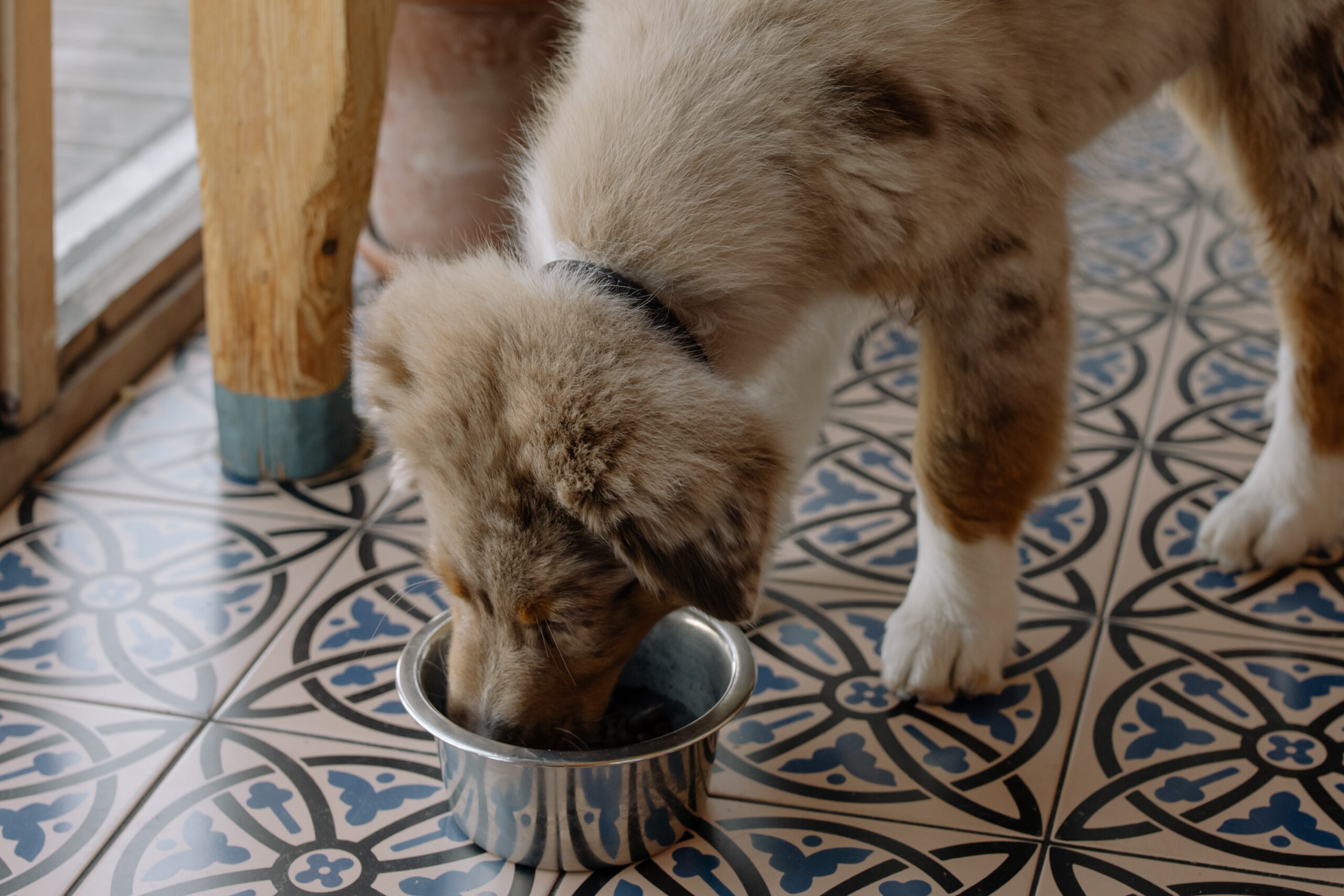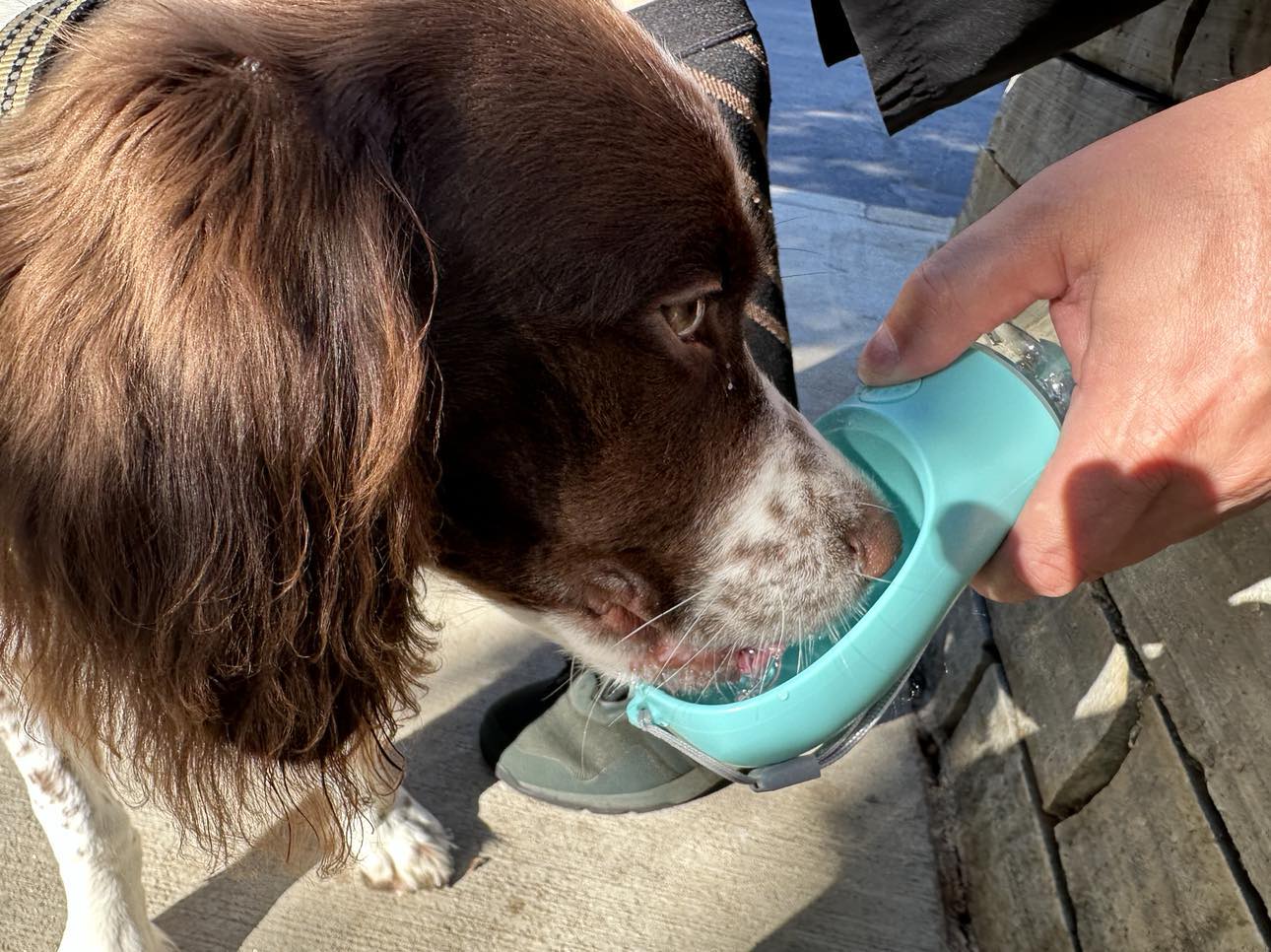Choosing the right dog crate size is a fundamental aspect of providing a safe and comfortable space for your furry companion. As a responsible pet owner, understanding how crate size impacts your dog’s well-being is crucial to ensure they have a cozy retreat that meets their specific needs. This guide will walk you through the essential considerations for selecting the ideal crate size, with a special focus on tailoring the dimensions to different dog breeds.
The Importance of Choosing the Right Dog Crate Size
The dog crate serves as a versatile tool with various purposes, from house training and travel safety to providing a secure haven for your dog to relax in. Selecting an appropriately sized crate is not just about convenience; it directly affects your dog’s physical and psychological comfort. A crate that is too small can cause discomfort and stress, while one that is too large might not provide the cozy, den-like environment that dogs naturally seek.
The Relationship Between Crate Size and Comfort
Imagine if you were confined in a space that was either too cramped or excessively spacious – it wouldn’t be an enjoyable experience. Dogs share similar sentiments. A properly sized crate offers them a sense of security, helping to reduce anxiety and promote relaxation. By understanding the correlation between crate size and your dog’s overall well-being, you can create a positive and reassuring environment that caters to their natural instincts.
Overview of the Breed-specific Approach to Crate Sizing
Every dog is unique, and their breed characteristics play a significant role in determining their ideal crate size. Smaller breeds may need snug, compact spaces that mimic the coziness of a den, while larger breeds might require crates that allow them to stand, turn, and lie down comfortably. In this guide, we will explore crate size recommendations tailored to various breeds, empowering you to make informed choices that cater to your dog’s specific requirements.
As we delve into the intricacies of selecting the right crate size for your dog, keep in mind that your furry friend’s comfort and well-being are paramount. By choosing a crate size that aligns with their needs, you’re not only providing them with a secure retreat but also demonstrating your commitment to their happiness and contentment.
Understanding Your Dog’s Needs
Recognizing the Purpose of a Dog Crate
Before delving into the specifics of crate sizing, it’s important to understand the multifaceted role that a dog crate plays in your pet’s life. While crates are commonly associated with house training and confinement, they serve broader purposes. A crate can serve as a safe haven where your dog can retreat for relaxation, sleep, or moments of solitude. It can also be a secure space for travel, a training aid, and a means to manage behavior. Recognizing these functions will help you appreciate the significance of choosing the right size.
Considering Your Dog’s Age and Developmental Stage
A dog’s crate needs can change as they grow and develop. Puppies, for instance, require smaller crates that provide a snug environment akin to the den-like spaces they would seek in the wild. As they mature, their crate size needs may evolve to accommodate their increased size and comfort. Puppies also undergo house training, during which a crate can aid in teaching bladder control and preventing accidents. Understanding your dog’s current developmental stage is key to selecting a crate that fosters their well-being and behavior.
Factoring in Your Dog’s Size and Growth Potential
One of the most critical aspects of crate sizing is considering your dog’s size and growth potential. While it might be tempting to choose a crate that matches your dog’s current dimensions, remember that many dogs continue to grow well into their first year or beyond. A crate that is too small can become restrictive and uncomfortable, inhibiting movement and causing distress. To ensure optimal comfort and longevity, it’s advisable to select a crate size that accommodates your dog’s anticipated adult size, allowing them ample space to stand, turn, and stretch.
By understanding the various stages of your dog’s life, from puppyhood to adulthood, and acknowledging the multiple purposes a crate serves, you can better appreciate the significance of proper sizing. The next sections will delve deeper into the factors to consider when determining the perfect crate dimensions for your specific breed, taking into account the unique traits and characteristics that make your furry companion one of a kind.
Factors to Consider for Crate Sizing
When it comes to selecting the ideal crate size for your dog, several key factors come into play. Taking these considerations into account ensures that your dog’s crate provides the utmost comfort and meets their specific needs.
Length and Height Measurements
Precise measurements of your dog’s length and height are foundational to choosing the right crate size. Measure your dog from the tip of their nose to the base of their tail for length and from the top of their head to the ground for height. These measurements provide a starting point for determining the minimum dimensions required for your dog to stand, turn, and lie down comfortably within the crate.
Weight and Proportions of Different Breeds
Different dog breeds vary significantly in size, weight, and proportions. Larger breeds may have different body structures compared to smaller breeds, influencing the space they need to move comfortably. Some breeds have longer torsos, while others have stockier builds. It’s essential to consider your dog’s breed-specific characteristics when selecting the crate size, as these traits influence their spatial requirements within the crate.
Activity Level and Behavioral Characteristics
Your dog’s activity level and behavioral tendencies also play a role in determining their ideal crate size. Active dogs that enjoy plenty of exercise may benefit from slightly more spacious crates to prevent feelings of confinement. Conversely, a more relaxed or sedentary dog might feel cozier in a slightly smaller crate. Additionally, consider if your dog is a “stretch out” sleeper or a “curl up” sleeper, as this will influence the length and width dimensions that best accommodate their sleeping habits.
By carefully considering length and height measurements, accounting for breed-specific proportions, and factoring in your dog’s activity level and behaviors, you can fine-tune your crate sizing decision. As we move forward, we’ll delve into breed-specific recommendations, providing you with a comprehensive understanding of how different crate sizes cater to various dog breeds’ distinct needs and characteristics.
Dog Crate Size Recommendations by Breed
| Breed Category | Specific Breeds | Recommended Crate Size (Length x Height) |
|---|---|---|
| Small Breeds | Chihuahua | 18-22 inches x 12-14 inches |
| Yorkshire Terrier | 24-30 inches x 18-20 inches | |
| Pomeranian | 24-28 inches x 18-20 inches | |
| Medium Breeds | Beagle | 30-36 inches x 21-24 inches |
| French Bulldog | 30-36 inches x 20-24 inches | |
| Cocker Spaniel | 36-42 inches x 23-25 inches | |
| Large Breeds | Labrador Retriever | 36-42 inches x 26-30 inches |
| German Shepherd | 42-48 inches x 28-32 inches | |
| Golden Retriever | 42-48 inches x 28-32 inches | |
| Extra-Large Breeds | Great Dane | 54-60 inches x 36-40 inches |
| Mastiff | 48-60 inches x 30-36 inches | |
| Saint Bernard | 48-72 inches x 30-36 inches | |
| Disclaimer: Crate sizes are general recommendations and may vary based on individual dogs. Always measure your dog accurately and consult with a veterinarian for the best crate size for your specific pet. | ||
Tips for a Comfortable and Safe Crate Environment
Creating a comfortable and safe environment within the dog crate goes beyond selecting the right size. Consider these essential tips to ensure that your furry companion’s crate becomes a welcoming haven they can truly enjoy.
- Provide Adequate Space for Movement and Stretching: While it’s crucial to choose a crate that matches your dog’s size, remember that a comfortable crate provides room for movement and stretching. Avoid overfilling the crate with bulky bedding or toys, as this can restrict your dog’s ability to move around freely. A well-proportioned crate allows your dog to stand up, turn around, and stretch comfortably without feeling cramped.
- Choose Appropriate Bedding and Accessories: The bedding and accessories you place in the crate contribute to your dog’s comfort. Opt for soft, washable bedding that provides insulation and cushioning. Be mindful of your dog’s preferences; some dogs may enjoy a cozy blanket, while others prefer a comfortable dog bed. Additionally, include safe and durable chew toys or interactive puzzles to keep your dog mentally stimulated during crate time.
- Ensure Proper Ventilation and Temperature Control: Proper ventilation is essential to prevent the crate from becoming stuffy or uncomfortable. Ensure that the crate has adequate openings for fresh air circulation. On warmer days, position the crate in a shaded area and avoid direct sunlight. During colder months, provide warm bedding or blankets to help your dog maintain a comfortable body temperature.
Maintaining a comfortable and safe crate environment enhances your dog’s overall experience and encourages positive associations with their crate. By implementing these tips, you create a cozy retreat that supports their well-being and reinforces the crate as a positive space. As we move forward, we’ll explore how to adapt crate size as your dog grows and changes, ensuring their continued comfort and contentment.
Adapting Crate Size as Your Dog Grows
As your furry friend matures and develops, their crate needs may evolve. Adapting the crate size to accommodate their changing requirements ensures their ongoing comfort and well-being.
Puppyhood to Adulthood Transition
Puppies undergo rapid growth and developmental changes during their first year. Begin with a crate size suitable for their current size while allowing room for growth. To facilitate a smooth transition, periodically measure your puppy’s length and height and adjust the crate size accordingly. Gradually increasing the crate’s dimensions ensures that your puppy’s living space remains comfortable and proportional as they transition into adulthood.
Gradual Adjustments Based on Size and Behavior
Observe your dog’s behavior and comfort level within the crate. If your dog appears cramped or struggles to move around comfortably, it might be time for a larger crate. Gradual adjustments to crate size based on your dog’s size and behavior prevent them from feeling overwhelmed by excessive space or confined by a too-small crate. Pay attention to signs of discomfort, such as restlessness or reluctance to enter the crate, which may indicate the need for a size adjustment.
Upgrade to a Larger Crate if Necessary
Some breeds continue to grow beyond their first year, necessitating a transition to a larger crate. Large and giant breeds, in particular, may benefit from an upgrade to an extra-large crate that accommodates their full-grown size. Providing ample space ensures that your dog can stretch out, stand up, and move freely. While an upgrade may require an investment, it promotes your dog’s comfort and prevents the need for frequent crate changes.
By adapting the crate size to align with your dog’s growth and comfort, you create a space that fosters relaxation and positive associations. Remember that each dog is unique, and their crate needs may vary. Regular assessments of your dog’s size, behavior, and comfort level will guide you in providing the ideal crate environment throughout their life stages. As we conclude this guide, you now possess the knowledge to select, customize, and maintain a crate that caters to your dog’s individual needs, promoting their well-being and happiness.
Common Mistakes to Avoid
While selecting the right crate size is crucial, avoiding common pitfalls ensures that your dog’s crate experience remains positive and beneficial. Steering clear of these mistakes promotes a harmonious relationship between your dog and their crate.
Choosing a Crate That’s Too Small
Opting for a crate that is too small can lead to discomfort and anxiety for your dog. A cramped space hinders their ability to move freely and engage in natural behaviors like stretching and turning. Avoid the temptation to select a crate based solely on your dog’s current size; consider their growth potential and select a crate that accommodates their future needs. A correctly sized crate creates a comfortable sanctuary that enhances their well-being.
Overestimating Your Dog’s Tolerance for Confinement
While crates offer security, overestimating your dog’s tolerance for confinement can lead to distress. Gradually introducing your dog to the crate and allowing them to acclimate at their own pace prevents anxiety and fear. Forcing your dog into the crate or leaving them confined for extended periods can lead to negative associations. Create a positive and gradual introduction to the crate to build trust and foster a sense of security.
Neglecting to Create a Positive Association with the Crate
Failing to establish a positive association with the crate can result in resistance and reluctance to enter it. Using treats, toys, and praise to reward your dog for entering the crate creates a sense of enjoyment and anticipation. Avoid using the crate as a form of punishment, as this can create negative associations and undermine its purpose as a safe space.
By avoiding these common mistakes, you ensure that your dog’s crate experience is positive, comfortable, and conducive to their well-being. Selecting the appropriate crate size, introducing it gradually, and fostering a positive connection will create a harmonious bond between your dog and their crate. As you embark on this crate journey with your furry companion, you’re equipped with the knowledge to make informed decisions and create a crate environment that enhances their quality of life.
Conclusion
Choosing the right crate size for your dog is an essential aspect of responsible pet ownership that directly impacts your furry friend’s well-being and happiness. By understanding your dog’s size, developmental stage, and individual characteristics, you can create a crate environment that promotes comfort, security, and positive associations.
Proper crate sizing plays a pivotal role in ensuring your dog’s physical and emotional well-being. A well-sized crate provides them with a comfortable space to rest, relax, and retreat to when needed. It allows them to move, stretch, and engage in natural behaviors while feeling secure and safe. By offering an appropriately sized crate, you contribute to your dog’s overall happiness and contentment.
Recognizing that every dog is unique, tailoring your crate choice to your dog’s specific needs is key. From small breeds to extra-large ones, each dog has distinct requirements based on size, growth potential, and behaviors. By carefully considering these factors, you can select a crate that supports their comfort and well-being at every life stage.
Empowering dog owners with knowledge about breed-specific crate sizing enables them to make informed decisions that enhance their dog’s quality of life. Understanding the dimensions that cater to your dog’s breed characteristics ensures a crate that becomes a welcoming and enjoyable space. With this information, you’re equipped to provide your dog with a crate environment that aligns with their needs and fosters positive experiences.
As you embark on your journey as a caring dog owner, remember that the crate is more than just a confined space. It’s a haven of comfort, security, and relaxation for your beloved companion. By following the guidelines in this guide, you’re well-prepared to select a crate size that nurtures your dog’s well-being, creating a space they’ll happily call their own. Your commitment to providing a suitable crate demonstrates your dedication to your dog’s happiness and strengthens the bond you share.










